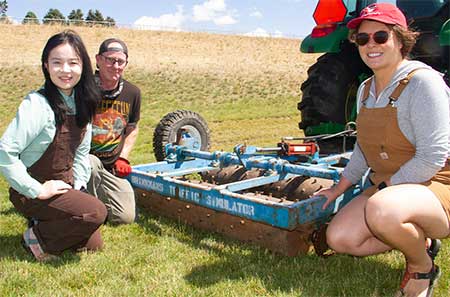 Artificial turf has been used in ballparks and fields across the land for decades. While they are ever green and resistant to pitting from cleats, they are also more likely to cause injuries. Plus, they aren’t exactly eco-friendly on either end of their lifecycle.
Artificial turf has been used in ballparks and fields across the land for decades. While they are ever green and resistant to pitting from cleats, they are also more likely to cause injuries. Plus, they aren’t exactly eco-friendly on either end of their lifecycle.
While Washington is known for its aerospace and tech, turf – at least the natural kind – isn’t easy to master. At least when it comes to standing up to the wear and tear of daily play.
Few would argue that Seattle’s Lumen Field artificial grass is pretty top-notch. But they’ll have to use real grass for the upcoming World Cup 2026. This will require some out-of-the-box thinking, removing the artificial turf, even temporarily, to add the draining systems required for nature’s version of the green stuff.
Researchers at Washington State University are way ahead of the curve. Their research team has been stomping, poking, prodding and gouging different experimental grasses to find the toughest turf in the land.
Don’t think they’ll be going easy on the grass either. The team has a suite of specialized equipment in their arsenal to test the grass, including an “earth cannon” that drops a metal probe into the grass to measure soil compaction below, a cleated device that gauges toque needed to tear up sod, and a cylinder studded with hundreds of metal bolts in it that can be towed behind a tractor. The goal is to see how well the grass can weather a simulated football game.
Washington is one of the world’s largest producers of grass seed (listen up, Jeopardy contestants), so they have ready access to a wide range of grasses along with the underlying science of what makes them more suitable than others.
“Grass is everywhere, yet people rarely notice it,” Neff said. “I love working with grasses, trying to solve society’s problems associated with grasses and lawns, and elevating its importance in people’s minds.”
The effort is backed by the Washington Washington State Turfgrass Seed Association and $695,000 in funding from the State of Washington. Grass blends will be tested in different parts of the state to see how they perform in different climates and weather conditions. The ideal blend will be able to survive the punishment and even do a little self-repair between games.
Besides being more giving, real grass is more environmentally friendly, according to researchers. Assuming they can find the right mix, natural grass fields may become the standard, rather than the exception, in professional sports and neighborhood playgrounds.